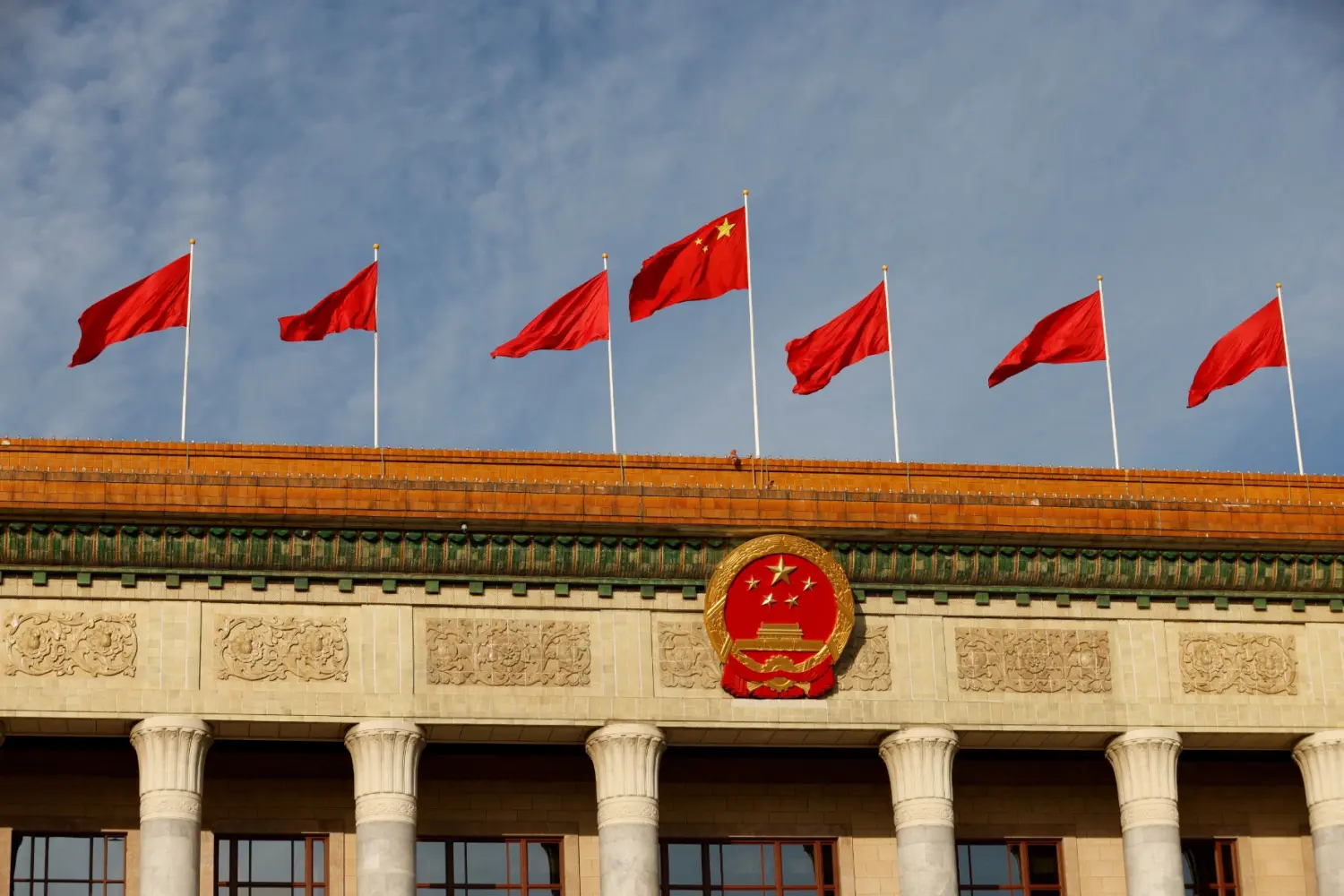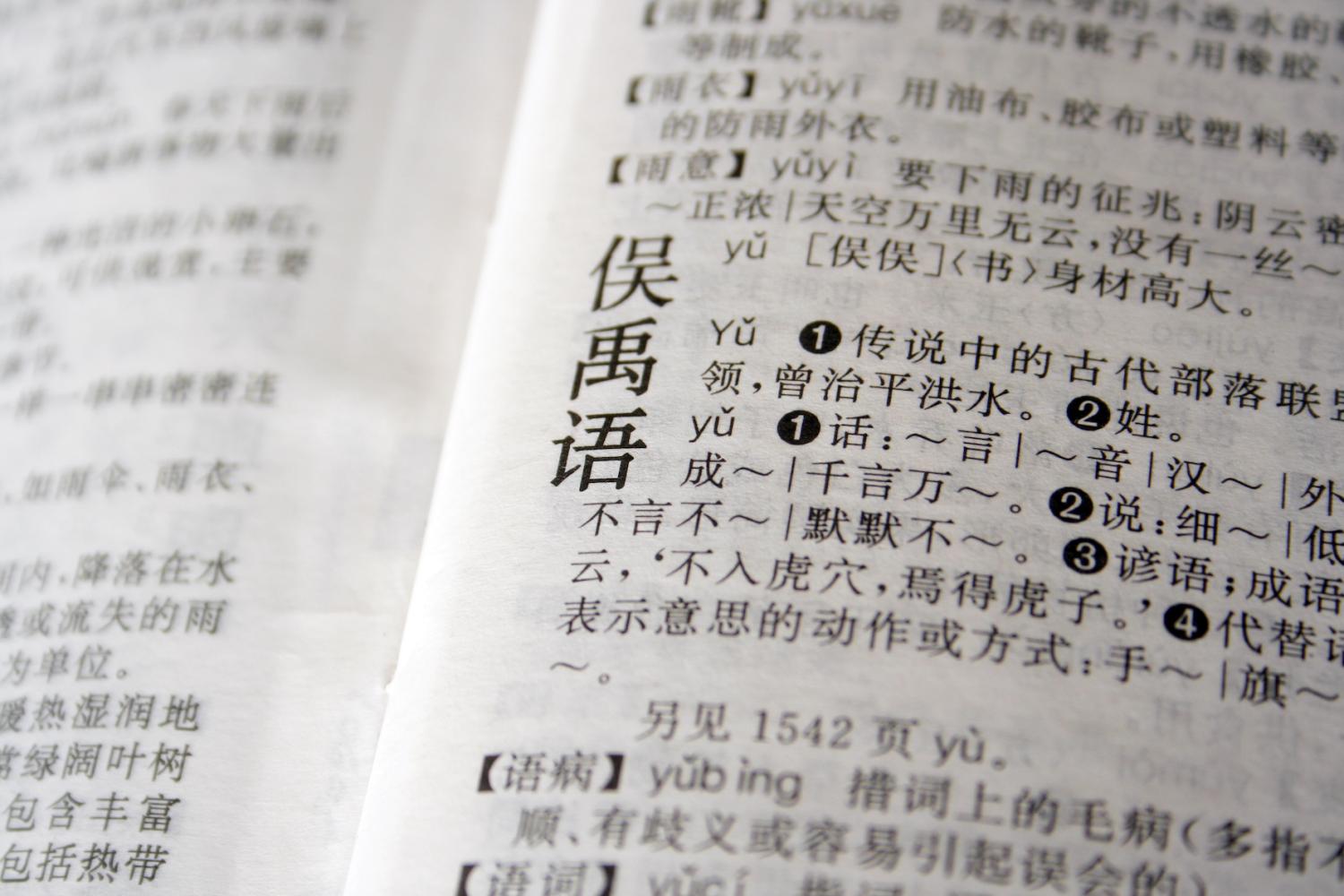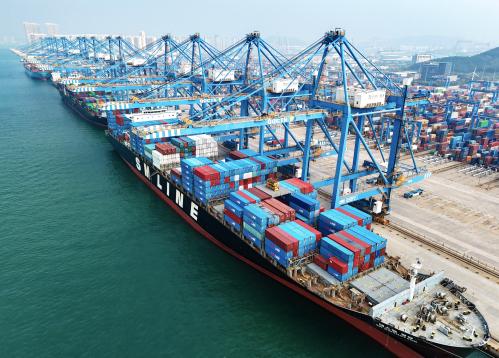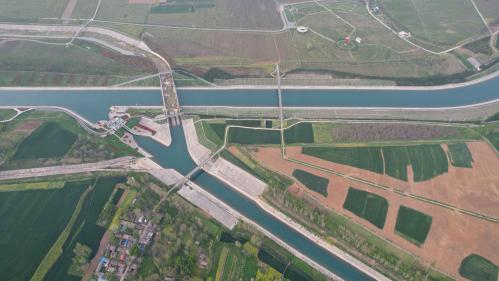This is the first essay of Global China’s “Lost in translation: Decoding Chinese strategic narratives” series. The full collection of essays can be found here.
As Beijing faces intensifying geostrategic headwinds and scrutiny of its great power ambitions, the concept of 斗争, or douzheng — which translates to both “struggle” and “fight” in English — has resurfaced in Chinese strategic discourse. “Struggling” has become a cornerstone of Xi Jinping’s vision for achieving China’s “great rejuvenation” (伟大复兴, weida fuxing) and was recently enshrined in the Chinese Communist Party (CCP) constitution at the 20th Party Congress. The need to “struggle for a new era” has been invoked in numerous contexts, from campaigns to combat internal corruption to calls for Beijing to more forcefully assert its interests abroad.
As Beijing has become more aggressive on the global stage, Xi’s exhortation for China to “dare to struggle” (敢于斗争, ganyu douzheng) and to “be good at struggling” (善于斗争, shanyu douzheng) have been cited as evidence of Beijing’s growing militarism and determination to forcefully resist any challenges to its sovereignty, security, and economic interests, regardless of the costs.
Beijing’s heightened sensitivity to perceived attacks on its core interests indeed raises the risk of conflict and necessitates greater vigilance by the United States and its allies to prevent escalation and manage crises with China. But Xi’s call for the party not just to “dare to struggle” but to “be good at struggling” also suggests that Beijing remains a rational actor that can assess its risks and shortcomings — that is, an actor that can be deterred.
In addition, simply reducing Xi’s douzheng to a directive for belligerence misses the larger picture. Douzheng embodies modern China’s aspirations and anxieties; it is an appeal to the Chinese people not to become complacent or to lose hope as difficulties mount at home and abroad, and to proactively work for the country’s “great rejuvenation.”
But how enthusiastically younger or even older generations will rally around the party amid growing economic woes, domestic political tightening, and stifling of once-vibrant industries and intellectual communities remains to be seen. Mobilizing a skeptical and fatigued citizenry in service of the party’s goals arguably poses greater challenges for Xi and his deputies in “struggling” for a “new era” than challenges from the outside.
“Struggle” in the CCP’s history
The concept of douzheng long predates Xi. Its roots can be found in Marxist philosophies, all the way back to the first line of Chapter I of “The Communist Manifesto”: “The history of all hitherto existing society is the history of class struggles,” or, in Chinese, “至今一切社会的历史都是阶级斗争的历史 [Zhijin yiqie shehui de lishi dou shi jieji douzheng de lishi.]”
Mao Zedong, who rose to the top of the CCP during the Chinese Civil War, appropriated the Marxist concept of “class struggle” and used it to call for everything from armed struggle and resistance against imperialism to campaigns against waste, bureaucracy, and corruption. Mao notoriously used the concept of douzheng to justify the need for constant ideological struggle, using ideological campaigns to remove rivals and threats to his leadership. Examples include the Yan’an Rectification Movement of the 1940s, which enabled Mao to secure his position as top leader of the party, and the “struggle sessions“ of the Cultural Revolution.
Interestingly, Xi Jinping has intentionally encouraged comparisons between himself and Mao. Following the 20th Party Congress, Xi’s first trip with his newly appointed top leaders was to Yan’an where he encouraged his fellow party members to “carry forth the spirit of struggle,” invoking the party’s early days as the underdog that ultimately won the Chinese Civil War.
After Mao’s death in 1976, China underwent a series of reforms initiated by Deng Xiaoping, and the focus of douzheng shifted from ideological struggle to advancing China’s modernization and economic development. Deng’s speech at the 12th Party Congress only mentions douzheng twice in his closing words: “We must struggle hard to make China a modern socialist country that is highly democratic and culturally advanced. We must also struggle hard to oppose hegemonism, safeguard world peace and promote human progress.”
The CCP’s approach to struggle has evolved over time to meet the needs and challenges of each era. Zhou Longhui, a researcher at the Fujian Academy of Social Science, in a recently published paper on the topic of douzheng, posits that “persistence and daring to struggle” is the historical experience of the Chinese Communist Party. But exactly what that struggle entails has evolved along with China’s external and internal environments.
“Struggle” according to Xi
Since Xi’s rise to power in 2012, douzheng has shifted once again, becoming more of an all-encompassing term. As China has become increasingly assertive on the global stage, so too has douzheng gained a more militant quality, indicating China’s determination to resist any challenges to its national interests.
A recent Foreign Affairs article by John Pomfret and Matt Pottinger captures the military element of douzheng, directly tying the term to Xi’s recent external aggression. Indeed, Xi has used the concept of douzheng to reflect China’s rising tensions with the United States and the West and to rally the CCP to prepare for challenges. But this is only part of the story.
As noted by an Economist article from last October, douzheng appears 22 times in Xi’s 20th Party Congress speech. However, the article only references Xi’s use of douzheng as a call for the party to adopt a “fighting spirit and a firm determination to never yield to coercive power.” In fact, Xi uses douzheng in six noticeably different contexts within the speech [see Figure 1]. Four of the uses are related to the military, and another two call on the Chinese people to resist external interference. The most common use of douzheng (seven times) was in relation to the spirit of struggle as a personal value — for example, in the context of “发扬斗争精神 [Fayang douzheng jingshen],” or “carry forward the spirit of struggle.” Five more uses relate to Xi’s anti-corruption drives, three to the CCP’s “great struggle” to advance the cause of socialism with Chinese characteristics, and one to domestic crimefighting.
Critically, Xi has called on the party both to “dare to struggle” and “be good at struggling.” That is, not to shy away from proactively addressing challenges but to also make certain that one is capable of taking action and confident of success. The fact that “dare to struggle” precedes “be good at struggling” in Xi’s guidance hasn’t been lost on Chinese officials and has encouraged the rise of “wolf warriors,” bureaucrats known for embracing combative rhetoric and confrontational behavior in defense of their country.
A more aggressive Chinese foreign policy in recent years has largely undermined China’s interests, alienating many of Beijing’s would-be partners and raising global wariness of its intentions — a clear example of why boldness must come hand in hand with capabilities and diplomatic finesse.
Also implicit in douzheng is the need for strategic maneuvering and compromise when necessary. As Cai Zhiqiang, the deputy party secretary of the Chinese Academy of Discipline Inspection and Supervision, said last November, “Struggle embodies not just actions taken during conflict, but also the process by which such parties strive to achieve their goals and eliminate resistance.”
Similarly, in a 2019 speech to the Central Party School, Xi said, “It is necessary … to strive for unity in struggle, seek cooperation in struggle, and strive for win-win results in struggle.” This suggests that douzheng can be as much about diplomacy and negotiation as it is about confrontation — and that, at its root, douzheng is both philosophical and tactical.
“Struggle” in the pandemic and post-pandemic periods
The emphasis on douzheng can also be seen in how the Chinese government framed its response to the COVID-19 pandemic as a war-like effort that required collective action, resilience, and sacrifice from both the state and its citizens. A strong focus was placed by the party and state media on the heroic efforts of healthcare workers, government officials, and even ordinary citizens in combating the virus. The pandemic became another chapter in a long history of struggles that, according to the narrative, China has faced and overcome.
China’s Generation Z is entering adulthood amidst widespread economic stagnation and post-pandemic cultural malaise. Xi’s more recent speeches have focused heavily on the “spirit of struggle” (斗争精神, douzheng jingshen), using the idea of douzheng to encourage Chinese youth to overcome hardships against the backdrop of high unemployment rates and to counter the growing popularity of the “lying flat” movement, a slang term used to refer to the rejection of a lifestyle of overachievement. Recent graduates have satirically responded by taking “zombie” graduation pictures.
Regardless of government officials’ pleas, the growing disillusionment and inertia are not limited to Chinese youth. Intellectuals, small business owners, and those in the technology sector are also feeling the tightening of the political atmosphere under Xi. To many, hard work has not translated into tangible rewards, leading to a growing sentiment that struggling may be in vain.
“Struggling” for a stabilized U.S.-China relationship
As momentum builds toward a meeting between Presidents Joe Biden and Xi on the sidelines of the Asia-Pacific Economic Cooperation leaders meeting later this month, Chinese officials and voices in the policy community have begun to speak of the need to proactively stabilize U.S.-China relations. Cui Tiankai, the former Chinese ambassador to the United States, recently made the case at the 10th Beijing Xiangshan Forum that the United States and China cannot improve relations by simply “lying flat” and hoping for the best. Cui remarked that while both Washington and Beijing are fully aware that a U.S.-China confrontation would be catastrophic for both countries and the rest of the world, “this doesn’t mean we can automatically avoid conflict and confrontation by doing nothing.” Cui continued, “It requires the joint efforts of both sides. If we choose to ‘lay flat’ and do nothing, the very thing we least want to happen is very likely to occur.”
Cui’s message has since been amplified by Chinese state outlets, including those associated with the People’s Liberation Army, indicating a strong interest in Beijing to address bilateral tensions and reduce the risks of escalation with the United States.
Embracing “struggle” for a new era
The renewed emphasis on douzheng in the Xi Jinping era paints a portrait of a China that is both ambitious and anxious. While the CCP aspires to achieve China’s “great rejuvenation,” Chinese leaders also remain acutely aware of the myriad internal and external challenges at hand. In the modern era, douzheng carries many meanings: It serves as a reminder of the CCP’s oft-repeated narrative of historical hardship, an encouragement to the Chinese people to work hard, and a warning to prepare for an uncertain future.
Xi’s call for his country to “dare to struggle” is a double-edged sword. Heightened vigilance and sensitivity to perceived attacks on China’s interests could spark excessive responses in hotspots like the South China Sea, the Taiwan Strait, or along China’s border with India. But Xi’s caveat that China must not just “dare to struggle” but also “be good at struggling” implies that Beijing isn’t simply throwing caution out the window.
Xi is also calling on the party to critically assess risks and shortcomings, which suggests that China will remain responsive to deterrence. Moreover, flexibility and compromise are also key elements in douzheng, which indicates that diplomacy remains a viable tool for shaping China’s policies.
Finally, the party’s call to struggle is not just a recognition of its external challenges but also the fact that its rejuvenation project faces just as many, if not greater, challenges at home. U.S. policymakers who face the task of managing intensifying competition with China would be wise to recognize these nuances and devise strategies that can deter the most destabilizing impulses of Beijing’s “struggle,” while seizing the opportunities presented by its predicaments and aspirations.
The Brookings Institution is committed to quality, independence, and impact.
We are supported by a diverse array of funders. In line with our values and policies, each Brookings publication represents the sole views of its author(s).









